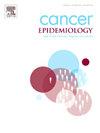丹麦2007-2021年角化细胞癌的患病率、发病率和趋势:一项基于人群的登记研究
IF 2.4
3区 医学
Q3 ONCOLOGY
引用次数: 0
摘要
导语:角化细胞癌(KC),即基底细胞癌(BCC)和鳞状细胞癌(SCC)的发病率在全球范围内不断增加,给医疗资源带来了重大负担。对于需要手术治疗的肿瘤尤其如此。目前尚不清楚这种增加是人口老龄化的结果还是皮肤癌风险的真正增加。了解年龄调整后的KC发病率趋势对改善未来的疾病管理至关重要。我们在一个全国性的大队列中研究了这些趋势,重点是大的、侵袭性的和手术挑战性的肿瘤。方法:从2007-2021年丹麦基于人口的数据库中提取所有BCC和SCC事件病例的信息。计算年龄调整后的发病率,并将其标准化为2013年欧洲标准人口。使用Joinpoint回归模型估计平均年百分比变化。对较大、侵袭性较强的肿瘤(肿瘤(T)分类≥T2)和头颈部肿瘤的发病率趋势进行描述性统计分析。结果:在2007-2021年期间,我们发现了183338例首次发病的BCC患者和42233例首次发病的SCC患者。根据年龄调整后的发病率,BCC从252 / 10万增加到338 / 10万,SCC从49 / 10万增加到104 / 10万。对于SCC,在研究期间的最后两年,这种增加尤为明显。≥T2及头颈部肿瘤明显增多。结论:KC是世界范围内最常见的癌症类型,2007年至2021年,BCC和SCC的年龄调整发病率显著增加,T分类较高的肿瘤和位于解剖敏感区域的肿瘤也是如此。由于这些肿瘤的主要治疗是手术,这引起了对未来医疗资源紧张的关注。本文章由计算机程序翻译,如有差异,请以英文原文为准。
Prevalence, incidence and trends of keratinocyte carcinoma in Denmark 2007–2021: A population-based register study
Introduction
The incidence of keratinocyte carcinoma (KC), i.e., basal cell carcinoma (BCC) and squamous cell carcinoma (SCC), is increasing worldwide, placing a significant burden on healthcare resources. This is especially the case for tumors requiring surgical intervention. It remains unclear whether this increase is a result of the population aging or a genuine increase in risk of skin cancer. Understanding age-adjusted incidence trends of KC is crucial for improving future management of the disease. We studied these trends in a large nationwide cohort, focusing on large, invasive, and surgically challenging tumors.
Methods
Information on all incident cases of BCC and SCC in Denmark was extracted from population-based databases in the calendar years 2007–2021. Age-adjusted incidence rates were calculated, standardized to the 2013 European Standard Population. Average annual percentage changes were estimated using Joinpoint regression models. Incidence trends for larger, more invasive tumors (tumor (T) category of ≥T2), and of those in the head and neck area, were elucidated with descriptive statistics.
Results
We found 183,338 patients with a first-time incidence of BCC and 42,233 patients with a first-time incidence of SCC in the period 2007–2021. The incidence rate, adjusted for age, increased from 252 to 338 per 100,000 for BCC and from 49 to 104 per 100,000 for SCC. For SCC, the increase was particularly pronounced in the last two years of the study period. Tumors ≥T2, and those in the head and neck area, increased markedly.
Conclusion
KC is the most common type of cancer worldwide, and the age-adjusted incidence rates of BCC and SCC increased significantly from 2007 to 2021, as did tumors with a higher T category and those located in anatomically sensitive areas. Since the primary treatment for many of these tumors is surgical, this raises concern about the strain on future healthcare resources.
求助全文
通过发布文献求助,成功后即可免费获取论文全文。
去求助
来源期刊

Cancer Epidemiology
医学-肿瘤学
CiteScore
4.50
自引率
3.80%
发文量
200
审稿时长
39 days
期刊介绍:
Cancer Epidemiology is dedicated to increasing understanding about cancer causes, prevention and control. The scope of the journal embraces all aspects of cancer epidemiology including:
• Descriptive epidemiology
• Studies of risk factors for disease initiation, development and prognosis
• Screening and early detection
• Prevention and control
• Methodological issues
The journal publishes original research articles (full length and short reports), systematic reviews and meta-analyses, editorials, commentaries and letters to the editor commenting on previously published research.
 求助内容:
求助内容: 应助结果提醒方式:
应助结果提醒方式:


